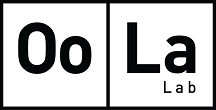What is the Shape Theory of Olfaction?

The shape theory of olfaction, also known as the lock-and-key theory, is a scientific explanation of how the sense of smell works. It proposes that the olfactory system recognises and distinguishes different odour molecules based on their shape and size.
According to the shape theory, the molecules responsible for odour have a specific shape that fits into corresponding receptors in the olfactory epithelium, which is the tissue in the nose responsible for detecting odours. When an odour molecule binds to a receptor, it triggers a series of chemical reactions that send signals to the brain, where the odour is perceived as a particular scent.
One of the key aspects of the shape theory is that different odour molecules have different shapes, and therefore they fit into different receptors in the olfactory epithelium. This means that the olfactory system is able to distinguish between a wide range of different odours based on their chemical structure.
The shape theory has been supported by a number of scientific studies. For example, researchers have found that changing the shape of an odour molecule can drastically alter the way it smells, suggesting that the shape of the molecule is a critical factor in determining odour perception.
However, there are some limitations to the shape theory of olfaction. Some researchers have suggested that other factors, such as the vibrations of odour molecules, may also play a role in determining odour perception. Additionally, the olfactory system is highly complex and involves many different processes beyond simple shape recognition.
Nonetheless, the shape theory remains an important and widely accepted explanation of how the sense of smell works, however the mystery still lives on...
- Tags: Fragrance Education






